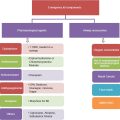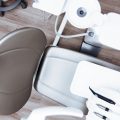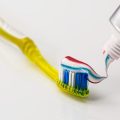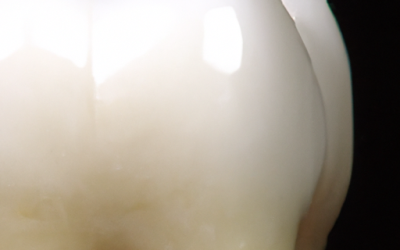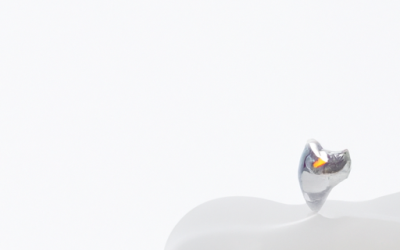Have you ever wondered what can be done if you have a tooth that’s out of place or not aligned correctly? Well, the good news is that tooth repositioning might just be the solution you’re looking for. Whether your tooth is slightly displaced or completely misaligned, a dentist can work their magic to try and restore it to its proper location. In this article, we’ll explore the world of tooth repositioning and delve into the various techniques used to correct these dental issues. So, if you’ve been feeling self-conscious about your smile lately, keep reading to discover how tooth repositioning could be the answer to your dental woes.
Types of Tooth Repositioning
When it comes to correcting displaced or misaligned teeth, there are several types of tooth repositioning options available. These include traditional braces, Invisalign, removable appliances, and functional appliances. Each option has its own unique advantages and considerations, so it’s important to understand the differences before making a decision.
Traditional Braces
Traditional braces are perhaps the most well-known type of tooth repositioning treatment. They consist of metal brackets that are bonded to the teeth and connected with wires and elastics. These components work together to gradually move the teeth into their desired positions over time.
Components of Braces
The components of traditional braces include the brackets, archwires, and elastics. The brackets are small metal or ceramic pieces that are attached to the teeth using a special adhesive. The archwires are then threaded through the brackets and exert gentle pressure to guide the teeth into their new positions. Elastics are used to apply additional force and help correct any bite issues.
Process of Tooth Movement
The process of tooth movement with traditional braces involves a series of adjustments made by an orthodontist. During each adjustment appointment, the archwires are replaced or tightened to continue moving the teeth. Over time, the constant pressure and adjustments gradually reposition the teeth into alignment.
Average Treatment Duration
The average treatment duration for traditional braces can vary depending on the severity of the misalignment and the individual’s response to the treatment. In general, treatment can range from one to three years. However, it’s important to note that each case is unique, and the orthodontist will provide a more accurate estimate based on the individual’s specific needs.
Maintenance and Care
To maintain the effectiveness of traditional braces, it’s important to practice good oral hygiene. This includes brushing and flossing regularly and avoiding sticky or hard foods that can damage the brackets or wires. Regular check-ups with the orthodontist are also crucial to monitor progress and make any necessary adjustments.
Invisalign
Invisalign is a popular alternative to traditional braces, especially for those who prefer a more discreet treatment option. It utilizes a series of clear, custom-made aligners that are worn over the teeth to gradually move them into alignment.
Overview and Advantages
One of the key advantages of Invisalign is its virtually invisible appearance. The clear aligners are made from a smooth, BPA-free plastic material that is comfortable to wear. In addition, the aligners are removable, allowing for easier brushing and flossing, as well as the ability to enjoy a wider variety of foods without restrictions.
Treatment Process
The Invisalign treatment process begins with a consultation and examination by an orthodontist. Digital impressions and images of the teeth are then taken to create a customized treatment plan. Based on this plan, a series of aligners are created, which are worn for about two weeks each. Gradually, the aligners shift the teeth into their desired positions.
Maintenance and Care
To maintain the effectiveness of Invisalign, it’s important to wear the aligners as directed by the orthodontist. They should be removed only for eating, drinking, brushing, and flossing. The aligners themselves should be cleaned regularly using a special cleaning system or by gently brushing them with a toothbrush and mild soap.
Effectiveness and Limitations
Invisalign is effective for correcting mild to moderate tooth misalignment issues. However, more complex cases may require traditional braces for optimal results. It’s important to consult with an orthodontist to determine if Invisalign is the right treatment option for your specific needs.
Removable Appliances
Removable appliances are another option for tooth repositioning and are often used in early intervention cases for children. They are typically made of plastic and can be taken out of the mouth for cleaning and maintenance.
Types of Removable Appliances
There are several types of removable appliances used in orthodontic treatment. These include Hawley retainers, clear retainers, and positioners. Hawley retainers consist of a plastic base that fits against the roof of the mouth or behind the lower teeth, with a wire component that wraps around the front teeth to exert force. Clear retainers are similar in design but are made of a clear plastic material. Positioners are used to fine-tune tooth positions after the initial phase of treatment.
Use and Application
Removable appliances are typically used to address simple tooth movement or minor alignment issues. They are often used as a preliminary treatment in younger patients to create space or correct minor crowding before the eruption of permanent teeth. The appliances are custom-made to fit the patient’s mouth for maximum comfort and effectiveness.
Treatment Duration
The duration of treatment with removable appliances can vary depending on the individual’s needs and the specific appliance being used. In some cases, treatment can be completed within a few months, while others may require longer wearing times. The orthodontist will provide guidance on how long the appliance should be worn each day to achieve the desired results.
Benefits and Considerations
One of the main benefits of removable appliances is their ease of use and maintenance. Being able to take the appliance out of the mouth for cleaning and eating can make it more convenient for the individual. However, it’s important to note that compliance is crucial for successful treatment, as the appliances need to be worn consistently as directed by the orthodontist.
Functional Appliances
Functional appliances are a type of orthodontic treatment that aims to correct jaw discrepancies and improve bite alignment. They work by exerting forces on the upper and lower jaws to stimulate growth and guide them into a more favorable position.
Function and Purpose
The primary function of functional appliances is to encourage proper jaw growth and development. They are commonly used to address issues such as overbites, underbites, or crossbites. By guiding the growth of the jaws, functional appliances can help improve the overall bite and achieve a more balanced facial profile.
Types of Functional Appliances
There are various types of functional appliances, including twin block appliances, Herbst appliances, and Mara appliances. Twin block appliances utilize removable upper and lower components that fit together to correct the bite. Herbst appliances are fixed devices that attach to the molars and guide the lower jaw into a forward position. Mara appliances are fixed appliances that simultaneously advance the lower jaw and expand the dental arch.
Treatment Process
The treatment process with functional appliances typically involves a preliminary phase with another orthodontic treatment, such as braces or aligners. Once the bite and dental alignment have improved, functional appliances can be used to guide the growth of the jaws. Regular adjustments and monitoring by the orthodontist are necessary throughout the treatment period.
Importance of Compliance
Compliance is crucial when it comes to functional appliances. The appliances must be worn consistently as directed by the orthodontist in order to achieve the desired results. Not wearing the appliances as instructed can prolong the treatment duration or affect the final outcome. It’s important to follow the orthodontist’s instructions closely and attend all scheduled appointments for adjustments and progress checks.
View all our emergency dental services
Key Factors for Tooth Repositioning
There are several key factors to consider when undergoing tooth repositioning treatment. These include dental examination, treatment planning, orthodontic consultation, and patient compliance.
Dental Examination
A comprehensive dental examination is the first step in determining the appropriate tooth repositioning treatment. The dentist or orthodontist will assess the overall oral health, examine the alignment of the teeth, and identify any underlying issues that may need to be addressed before beginning treatment.
Treatment Planning
After the dental examination, the orthodontist will develop a treatment plan based on the individual’s specific needs and goals. This plan will outline the recommended treatment option, estimated duration, and any additional procedures that may be necessary.
Orthodontic Consultation
An orthodontic consultation is essential to discuss the treatment plan, address any concerns or questions, and ensure that the individual fully understands the process and expectations. During this consultation, the orthodontist will provide all the necessary information and help the individual make an informed decision about their treatment.
Patient Compliance
One of the most important factors in the success of tooth repositioning treatment is patient compliance. It’s crucial to follow all instructions provided by the orthodontist, including wearing appliances as directed, maintaining good oral hygiene, attending scheduled appointments, and avoiding any activities that may damage the teeth or appliances.
Potential Challenges and Risks
While tooth repositioning treatments can provide great results, there are potential challenges and risks that should be considered.
Initial Discomfort
It’s common to experience some initial discomfort or soreness after the placement of braces or the use of functional appliances. This discomfort typically subsides within a few days as the mouth adjusts to the new appliances. Over-the-counter pain relievers can help manage any discomfort during this adjustment period.
Soft Tissue Irritation
Braces and other orthodontic appliances can sometimes cause temporary irritation or sores on the inside of the cheeks or lips. Wax or dental silicone can be applied to the brackets or appliances to provide a protective barrier and alleviate discomfort. It’s important to consult with the orthodontist if persistent irritation occurs.
Tooth Sensitivity
During the tooth repositioning process, it’s common to experience temporary tooth sensitivity. This sensitivity may be exacerbated by consuming very hot or cold foods and beverages. Using a toothpaste designed for sensitive teeth and avoiding extreme temperature changes can help minimize tooth sensitivity.
Root Resorption
In rare cases, root resorption may occur during tooth repositioning treatment. This refers to the shortening of the tooth roots, which can lead to tooth instability. Regular monitoring by the orthodontist and following their recommended treatment plan can help minimize the risk of root resorption.
Increased Risk of Decay
Braces and other orthodontic appliances can create areas where plaque and food particles can easily accumulate, increasing the risk of tooth decay and gum disease. It’s important to maintain excellent oral hygiene by brushing and flossing thoroughly and regularly. The orthodontist may also recommend additional hygiene measures, such as using interdental brushes or a water flosser.
Post-Treatment Maintenance
After completing tooth repositioning treatment, it’s important to maintain the results through proper post-treatment maintenance.
Retainers
Retainers are commonly used after tooth repositioning treatment to help maintain the new tooth positions. They can be removable or fixed depending on the individual’s needs and the recommendation of the orthodontist. Retainers should be worn as directed to prevent relapse and maintain the desired results.
Importance of Retention
Retention is a crucial phase of tooth repositioning treatment. Without proper retention, the teeth may gradually shift back to their original positions. It’s important to follow the orthodontist’s instructions regarding retainer wear and attend all recommended follow-up appointments to ensure the long-term stability of the teeth.
Long-Term Follow-Up
Regular check-ups with the orthodontist are necessary after completing tooth repositioning treatment. These follow-up appointments allow for monitoring of the results, evaluation of the stability of the teeth, and any necessary adjustments to retainers or other maintenance measures.
Oral Hygiene Practices
Maintaining excellent oral hygiene is essential for long-term oral health and the preservation of the results achieved through tooth repositioning. Brushing and flossing regularly, using fluoride toothpaste, and visiting the dentist regularly for cleanings and check-ups are important practices to incorporate into daily oral hygiene routines.
Alternatives to Tooth Repositioning
In some cases, tooth repositioning may not be the most suitable option. Here are a few alternatives that can be considered:
Tooth Extraction
In certain situations, tooth extraction may be recommended to address severe overcrowding or non-alignment of the teeth. Removing one or more teeth can create space to allow the remaining teeth to properly align.
Veneers
Veneers are thin, custom-made shells that are bonded to the front surface of the teeth to improve their appearance. While veneers do not correct the underlying alignment issues, they can provide a cosmetic solution for individuals who are primarily concerned with the appearance of their teeth.
Crown or Bridge
A crown or bridge may be recommended if tooth repositioning is not feasible or if a tooth is severely damaged or missing. These restorations can help restore the appearance and function of the teeth and improve overall oral health.
Dental Implants
In cases of tooth loss, dental implants can be an effective permanent solution. Implants are artificial tooth roots that are surgically placed in the jawbone, providing a sturdy foundation for replacement teeth that look and function like natural teeth.
Choosing the Right Treatment Option
When considering tooth repositioning, several factors should be taken into account to ensure the most suitable treatment option is selected.
Severity of Misalignment
The severity of misalignment will influence the type of treatment that is most appropriate. For mild cases, options like Invisalign or removable appliances may be sufficient. More complex cases may require traditional braces or a combination of treatments.
Aesthetic Concerns
For individuals concerned with the appearance of their treatment, options like Invisalign or clear retainers may be preferable due to their discreet appearance. Others may prioritize effectiveness over aesthetics and opt for traditional braces.
Oral Health Considerations
Individuals with existing dental issues, such as tooth decay or gum disease, may require additional treatments or procedures before tooth repositioning can begin. It’s essential to address any oral health concerns prior to starting orthodontic treatment.
Treatment Costs and Duration
Treatment costs and duration can also play a role in choosing the most suitable option. Traditional braces are typically more affordable compared to Invisalign, for example. It’s important to discuss the financial implications and treatment timeline with the orthodontist to make an informed decision.
By considering these key factors, individuals can better determine which tooth repositioning treatment option aligns with their needs and preferences. Consulting with a qualified orthodontist is crucial in making an informed decision and achieving the desired results.


